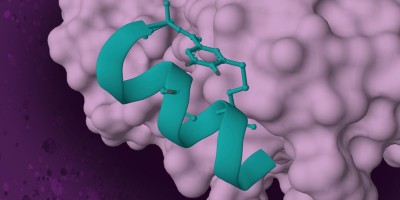Reimagining the training of the next generation of chemists in the era of digital chemistry, automation, robotics and artificial intelligence.

References
Coley, C. W. et al. A robotic platform for flow synthesis of organic compounds informed by AI planning. Science 365, eaax1566 (2019).
Black, D. & Niu, W. Digital Futures RSC https://go.nature.com/44S77PP (2020).
Beckmann, K. Digital Chemistry. Merck https://go.nature.com/442OuIT (2021).
Baird, S. G. & Sparks, T. D. What is a minimal working example for a self-driving laboratory? Matter 5, 4170–4178 (2022).
St James, A. G. et al. Exploring machine learning in chemistry through the classification of spectra: an undergraduate project. J. Chem. Educ. 100, 1343–1350 (2023).
Nel, M., Potgieter, K., Alimi, O. A., Nel, A. L. & Meijboom, R. The automated synthesis of aspirin: an undergraduate practical activity. J. Chem. Educ. 99, 3773–3779 (2022).
Li, F. & Cannon, C. DigiFAB and FoNS data science datathon competition: winners announced! Imperial College London https://go.nature.com/3NSkyti (2021).
Feng, J., Huang, S. & Tuladhar, S. The DigiFAB Hackathon 2021: our challenge and how we hacked it. Imperial College London https://go.nature.com/46s07e7 (2021).
Chao, K. W., Lou, Y. & Hoo, W. G. Hack it! Reflecting on the 2021 DigiFAB Hackathon. Advanced Hackspace https://go.nature.com/3NT2r6R (2021).
Author information
Authors and Affiliations
Corresponding author
Ethics declarations
Competing interests
The authors declare no competing interests.
Additional information
Related links
Advanced Hackspace: https://imperialhackspace.com/
ATLAS: https://www.imperial.ac.uk/automated-high-throughput-platform-suite/
DigiFAB: https://www.imperial.ac.uk/digital-molecular-design-and-fabrication/
Digital methods and computational modelling course: https://go.nature.com/3XPm6Yq
FAIR principles: https://www.go-fair.org/fair-principles/
Lab of the Future course: https://dmf-lab.co.uk/
MSc in Digital Chemistry: https://go.nature.com/44KrZIY
ROAR: https://www.imperial.ac.uk/rapid-online-analysis-of-reactions/
Synthesis 4.0: https://go.nature.com/44NPeSp
Rights and permissions
About this article
Cite this article
Greenaway, R.L., Jelfs, K.E., Spivey, A.C. et al. From alchemist to AI chemist. Nat Rev Chem 7, 527–528 (2023). https://doi.org/10.1038/s41570-023-00522-w
Published:
Issue Date:
DOI: https://doi.org/10.1038/s41570-023-00522-w
- Springer Nature Limited
This article is cited by
-
Making the Complicated Simple: A Minimizing Carrier Strategy on Innovative Nanopesticides
Nano-Micro Letters (2024)


